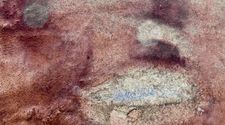
Many geological disposal concepts incorporate cementitious materials, such as grouts, mortars or concrete: to encapsulate wastes; to backfill waste vaults (and provide a “chemical barrier” for radionuclide transport); to provide structural integrity for underground vaults or disposal tunnels; and to seal tunnels and shafts. It is therefore important to consider the long-term behaviour of such materials when assessing the stability and safety of geological repositories for radioactive wastes. The behaviour of cementitious materials can be influenced by a variety of physical, chemical, and mechanical processes, whose nature and importance will evolve over time and which need to be understood when developing models of repository evolution as part of a safety case.
The modelling of cement is complicated by the fact that the cement is dominated by the behaviour of Calcium Silicate Hydrate (C-S-H) gel, which is a complex solid exhibiting incongruent dissolution behaviour. Quintessa has carried out a range of modelling studies which have explored different approaches to C-S-H dissolution using both QPAC and MINARET. Both codes both have the capacity to implement a wide range of solid-solution or discrete solid phase models of C-S-H dissolution
Quintessa has undertaken work contributing to the international Long-term Cement Studies (LCS) project which has included simulations of: cement hydration; cement-clay interactions (Tournemire industrial analogue); cement-rock interactions (Maqarin natural analogue); and an in situ experiment on cement leaching
Recent work has included modelling detailed cement alteration pathways due to groundwater intrusion, and aspects of concrete degradation, in particular, the potential for porosity and fracture clogging and how this may affect long-term repository evolution. The implications of such phenomena were discussed in a paper presented at WM2018 (Waste Management 2018).